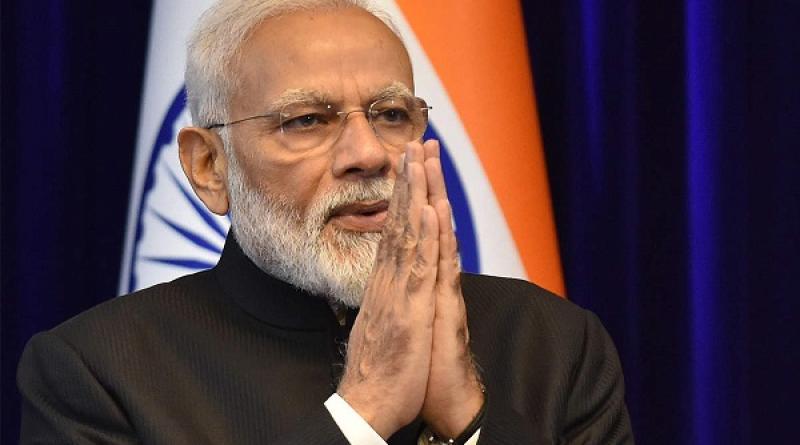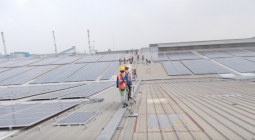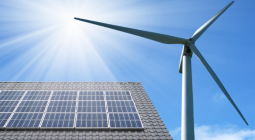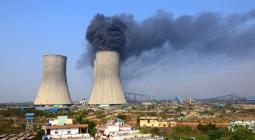India: Prime Minister Narendra Modi’s new ‘One Sun One World One Grid’ vision positive.

Working towards a single, globally connected electricity grid
Prime Minister Narendra Modi of India has announced a new ‘One Sun One World One Grid’ (OSOWOG) vision for India to replicate its global solar leadership by encouraging the phased development towards a single, globally connected, electricity grid to leverage the multiple benefits of ever-lower-cost renewable energy.
International grid connectivity builds a win-win outcome.
Countries like India have huge natural renewable energy resources and accelerated investment in low-cost, zero-pollution sustainable energy, with increased scale driving faster electricity deflation is a win. The national grid benefits from a greater capacity to integrate low-cost but intermittent renewable energy, while at the same time exporting surplus low-cost renewable energy at times of peak generation and building grid capacity to import electricity (say from Bhutan) at times of peak evening demand, when the sun has set.
INDIA CURRENTLY RELIES ON SOME US$250BN OF FOSSIL FUEL IMPORTS ANNUALLY (oil, diesel, LNG, coking and thermal coal). OSOWOG would put the country on a path to leverage domestic energy resources and progressively develop world competitive sustainable renewable energy exports, improving the current account deficit and reducing imported inflation.
Using renewable energy means less water scarcity and reduced particulate and air pollution. Global investors have shown a clear, growing propensity to invest in India’s renewable energy ambitions (when backed by sound government contracts), and to support the grid infrastructure those ambitions need. For an added benefit, India could move to centre stage globally, accelerating the energy system’s decarbonisation, and helping to end a global climate crisis that India did not create.
The idea of an internationally connected electricity grid is not new. Decades ago the elite Club of Rome and some associates launched Desertec to leverage the vast natural resources of Northern Africa as a supply of zero-emissions solar and wind energy to Europe, with futuristic plans of subsea cables from Morocco to Gibraltar, and Tunisia to Sicily then Italy to leverage the unlimited solar wealth of the Sahara Desert.
Only after ‘learning by doing’ at industrial scale from installing wind turbines in the North Sea has the growing commercial viability of subsea electricity cabling been proven, at ever increasing capacities, while unit costs have declined dramatically.
THE TECHNOLOGY OF HIGH-VOLTAGE DIRECT CURRENT (HVDC) CABLING HAS ADVANCED PHENOMENALLY over the last decade. The North Sea Network Link between Norway and the UK is a 1,400 megawatt (MW), 515kV, 730 kilometre (km) connection due for completion in 2021, with cable manufactured by Prysmian of Italy – the world leader in cables. This builds on a number of shorter, lower capacity connections. Back in 1986 the second cross-channel England-France grid connection was commissioned, with 2000MW of 270kV cable covering 73km. In 2011 the BritNed 260km 1,000MW, 450kV grid link between England and the Netherlands was completed.
In 2016, an international consortium of SoftBank of Japan, State Grid Corp of China, KEPCO of Korea proposed a very ambitious Northeast Asia grid strategy to link the national Mongolia-China-South Korea-Japan grids.
And in 2019 Thailand relaunched efforts to build a South East Asian grid connectivity system to better distribute the hydro-electricity of the greater Mekong River across Myanmar, Laos, Cambodia, Malaysia and Vietnam. Since 2018, Malaysia has imported 100MW from Laos via Thailand, rising to 300MW from 2020 (known as the Lao PDR, Thailand, Malaysia – Power Integration Project).
In late 2019 Sun Cables received preliminary funding commitments for its exceptionally ambitious nation-building 3,800km Darwin-Singapore subsea cable proposal.
For many years, India has pursued international electricity trade. Bhutan-India has an international grid connectivity (with ambitious but long-delayed plans to develop some of the 30GW of Bhutan hydro capacity potential). India-Nepal grid capacity has progressively grown to some 450MW and India-Bangladesh is 1,160MW (with a doubling of capacity being built currently by Adani to export electricity from its 1,496MW Godda import coal-fired power plant in Jharkhand to Bangladesh). However, trade is largely one-directional, importing hydroelectricity from Bhutan and exporting to Nepal and Bangladesh.
ONGOING SOLAR ENERGY DEFLATION MAKES THESE GLOBAL VISIONS OF THE PAST A POTENTIAL REALITY now, and more compelling as this new decade unfolds. Grid connectivity can leverage the time difference between countries to best utilise intermittent but low-cost solar and wind power generation. Coupled with connectivity with Bhutan’s and Nepal’s hydro-electricity capacity can maximise supply at times of more valuable peak power demand, and best exploit the divergent natural resources of different countries.
Gautam Adani, Chairman of Adani Group, has referenced how solar costs have dropped 99% in the last four decades, and are on track to drop another 99% in the next 40 years. He calls for a “Green Energy Acceleration in the Post Covid World”.
This changes everything. Virtually free renewable energy is entirely foreseeable, but only if we develop a cost-effective way of time-shifting production to when it is needed (via batteries and renewable hydrogen), time-shifting electricity demand (demand response management) and/or through significantly expanded inter-state and international grid connectivity.
Prime Ministers Narendra Modi and Sheikh Hasina first discussed India exporting its exceptionally low-cost solar energy from Gujarat and Rajasthan to Bangladesh in 2019. Even accounting for the grid transmission costs doubling the cost of delivered electricity, with solar as low as Rs2.50/kWh (and going below Rs2 later this decade), this power can be delivered at a substantial discount to Bangladesh’s wholesale electricity price, which is double that of India due to Bangladesh’s increasing reliance on expensive, dirty, imported coal, diesel and LNG.
THE ‘ONE SUN ONE WORLD ONE GRID’ VISION GOES FURTHER. A 1,000km subsea HVDC connection from Oman to Gujarat would take ultra-low cost solar electricity (built by leading installers like India’s very own Sterling & Wilson) in the middle of the Oman and UAE afternoon and deliver it into the evening peak in Dhaka. Adding to solar from Ladakh and hydro-electricity from Nepal, potentially to Colombo as well.
Virtually unlimited low-cost renewables are available today at massive scale in India, with zero inflation indexation for 25 years. This is entirely sustainable power producing no carbon emissions and no air or water pollution. Deflationary green exports can realistically entirely replace expensive, inflationary, polluting fossil fuel imports, with vision and international co-operation, bringing employment and international investment.
What’s not to like about Modi’s ‘One Sun One World One Grid’ vision?
Tim Buckley is Director Energy Finance Studies, IEEFA South Asia
This commentary first appeared in India Inc.
12 June 2020
IEEFA





